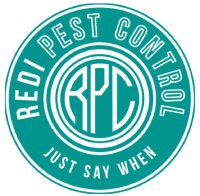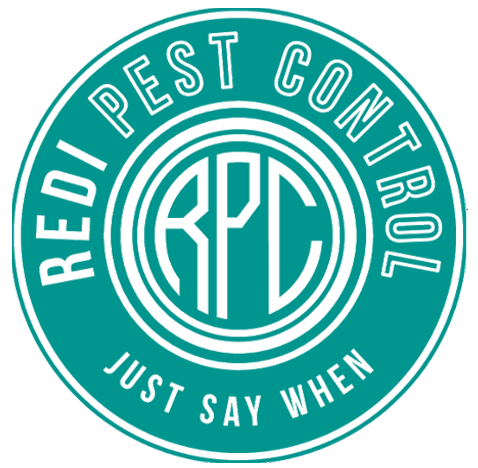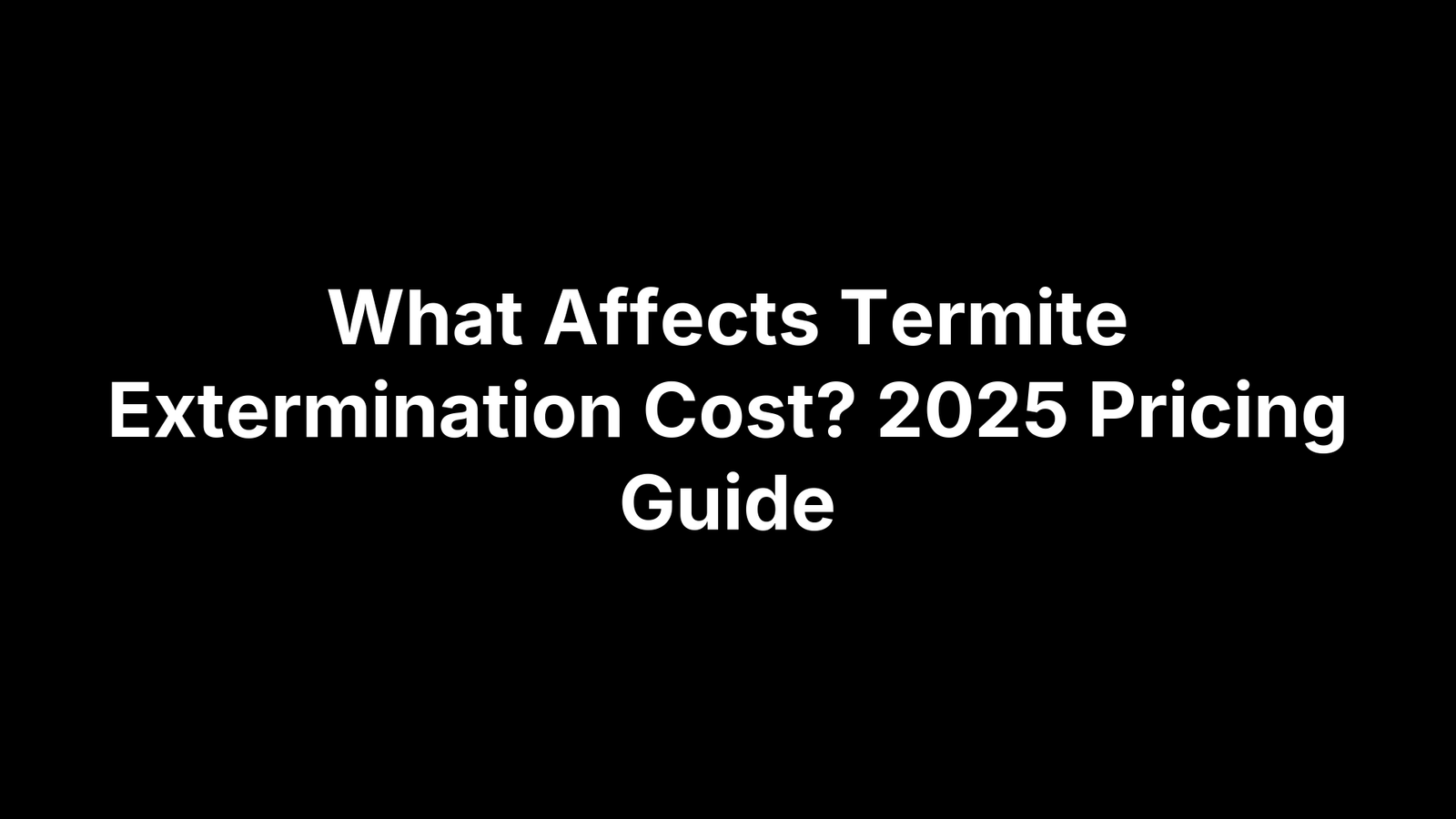Wondering how much it really costs to evict a termite colony before it eats through your equity? In 2025, professional extermination runs anywhere from $300 for a quick spot treatment to more than $3,800 for whole-home fumigation, with most homeowners landing between $850 and $1,600. Knowing those numbers—and why they swing so widely—can spare you the shock of a padded invoice and the heartache termites cause to the tune of $5 billion in U.S. repairs every year.
Below, you’ll find a clear breakdown of the price drivers—from species and treatment method to regional labor rates—plus tables, money-saving tactics, and a checklist for vetting quotes. We’ll also cover national averages, per-square-foot math, hidden fees most companies skip over, and real-world tips that can trim 10–20 % off your final tab. By the end, you’ll know exactly what a fair termite bill looks like and how to lock in protection without overpaying.
2025 National Average Termite Extermination Costs at a Glance
If you just want the numbers, here they are. The figures below reflect what a single-family homeowner with an average-size, stick-built house in the U.S. can expect to pay in 2025 before any regional mark-ups or severe structural repairs are added.
| Line item | Low end | National average | High end |
|---|---|---|---|
| Initial extermination treatment | $300 | $1,200 | $3,800+ |
| Annual monitoring / warranty renewal | $125 | $225 | $350 |
| Minor cosmetic repairs after treatment | $250 | $850 | $2,000 |
“Treatment” is the one-time job that eliminates the active colony. “Monitoring” covers yearly inspections, bait-station servicing, or chemical warranty renewals that keep the guarantee in force. “Repairs” refer only to patch-ups of surfaces the bugs chewed—not large beam replacement or foundation work, which can run well past $5,000 and are therefore excluded from these averages.
Typical price range for initial treatment
Light, newly detected infestations run $300–$750 because technicians can spot-treat limited areas and use less termiticide. Moderate, established colonies that have spread to several rooms generally cost $800–$1,600. Whole-home tent fumigation, extensive trench-and-rod work, or treating multi-story structures pushes prices into the $2,000–$3,800+ bracket.
Annual monitoring and renewal fees
Most modern bait systems or liquid barrier warranties require a quick inspection every 12 months. Expect $125–$350 per visit. Over five years that’s roughly $125 × 5 = $625 on the low side or about $225 × 5 = $1,125 for the national average—which is still cheaper than paying for a fresh infestation.
Cost variations by home size (per-square-foot estimates)
Treatment expenses scale with square footage because technicians calculate chemicals and labor by linear or square feet. In 2025 the rule of thumb is $0.50–$1.75 per sq. ft.
| Home size | Low estimate | High estimate |
|---|---|---|
| 1,500 sq. ft. | $750 | $2,625 |
| 2,500 sq. ft. | $1,250 | $4,375 |
| 4,000 sq. ft. | $2,000 | $7,000 |
Knowing where your home falls in these ranges helps you benchmark quotes before you sign on the dotted line.
8 Core Factors That Drive Termite Extermination Prices
No two homes—or termite colonies—are identical, so the quote you get will be a blend of several moving parts. Understanding the biggest levers behind termite extermination cost lets you spot padded fees and see where a small change (like easier access) can shave hundreds off the bill.
Type of termite species
Subterranean colonies are the most common and cheapest to treat; drywood termites often tack on about 15 % because they hide in inaccessible joists and usually demand fumigation. Dampwood species, while rarer, may require moisture correction in addition to chemicals.
Infestation severity and colony size
A single mud tube along a sill plate is one thing; multiple swarm piles and hollow-sounding beams are another. Severe infestations can double chemical volume and add extra drill-and-patch labor, bumping costs $600–$1,200 above a light case.
Treatment method selected
Spot foaming can clock in 30 % below average, whereas whole-structure tenting or full liquid barriers can inflate the invoice 50–100 %. Choosing a hybrid plan (bait + spot liquid) often lands in the middle but buys longer protection.
Property size, layout, and construction materials
Linear-foot pricing means a 3,500-sq.-ft. slab with wrap-around porches takes more termiticide than a 1,200-sq.-ft. crawl-space cottage. Finished basements, stone veneers, or metal reinforcements complicate drilling and can add $0.25–$0.40 per sq. ft.
Geographic location and local labor rates
High-humidity coastal states and metro areas with pricey labor (think California or Florida) routinely come in 10–25 % above national averages. By contrast, 2025 quotes in Arizona trend lower—roughly $400–$2,900—thanks to cheaper labor and drier soil.
Accessibility and prep work required
Tight crawl spaces, dense landscaping, or built-in cabinets the crew must move translate into extra man-hours. Expect $50–$300 in surcharges if technicians need to trench by hand, remove lattice, or drill through tile.
Warranty length and follow-up visits
A bare-bones 12-month “re-treat only” guarantee costs little up front but offers limited peace of mind. Extendable, transferable five-year plans add $100–$400 to year one yet save money if termites return.
Company expertise, licensing, and insurance level
Veteran, state-licensed firms with million-dollar liability coverage and eco-certified chemicals charge a premium—usually 10–20 % higher than cut-rate outfits. That premium buys proper dosing, thorough documentation, and far less risk to your property and health.
Price Breakdown by Treatment Method
All termite treatments share the same end goal—wipe out the colony and keep it from coming back—but the way they get there (and what they cost) is wildly different. Below is a side-by-side look at the most common approaches professionals use in 2025 and how each one influences your total termite extermination cost.
Liquid termiticide barriers – average cost and when recommended
A crew digs a shallow trench around the foundation, drills through patios or slabs, and injects a non-repellent chemical such as fipronil. The idea is to create an invisible moat that workers carry back to the nest.
- Typical pricing: $3–$12 per linear foot or $450–$2,500 per home
- Lifespan: 8–10 years before re-application is needed
- Best for: Subterranean termites, homes with easy soil access
Pros: Long residual, low maintenance. Cons: Up-front digging or concrete drilling may be messy.
Baiting systems – installation, maintenance, and long-term pricing
Bait stations are installed every 8–10 feet around the perimeter. Termites feed on the cellulose bait laced with an IGR (insect growth regulator) and share it with the colony.
- Startup (year one): $800–$1,800
- Annual monitoring: $125–$350
- 5-year projected spend:
startup + (annual × 4)≈ $1,300–$3,200
Pros: Minimal soil disruption, easy to add stations later. Cons: Requires recurring visits; slower kill time than liquids.
Whole-structure fumigation – cost drivers and special considerations
For extensive drywood infestations, the entire building is tented and filled with Vikane gas for 24–72 hours. Everyone (pets, too) must vacate.
- National 2025 average: $1–$4 per sq. ft.
- Example: 2,000-sq.-ft. home → $2,000–$8,000 excluding hotel or pet boarding fees
Pros: Reaches termites hidden deep in walls. Cons: No residual protection; food and meds must be bagged.
Heat and orange-oil spot treatments – niche options and pricing
Localized drywood pockets in furniture or a single wall can sometimes be treated without tenting.
- Cost per treatment zone: $250–$900
- Re-treat likelihood: higher; plan on 1–2 follow-ups
Pros: No chemicals, occupants return the same day. Cons: Limited penetration; ineffective for subterranean colonies.
Combination or integrated approaches – how bundled pricing works
Many pros mix methods—such as a liquid barrier under the slab plus bait stations in landscape beds—to hedge against future swarms.
- Bundle premium: usually 5–15 % lower than purchasing each service separately
- Typical hybrid invoice: $1,600–$3,200 for a mid-size home
Why it matters: Integrated Pest Management (IPM) balances immediate knock-down with long-term monitoring, often lowering lifetime termite extermination cost while boosting peace of mind.
Hidden or Additional Costs Homeowners Often Overlook
The quote your technician hands you rarely tells the whole story. A handful of “little” line items can pile hundreds—or even thousands—onto the final termite extermination cost if you’re not watching for them. Scan the extras below so they don’t sneak up on you.
Pre-treatment inspections and wood-destroying insect reports
Many companies advertise a “free” inspection, but a detailed WDI report required for real-estate sales usually isn’t. Expect $75–$150 for a standard pre-treat check or $100–$225 for a notarized closing document.
Structural repairs after termite damage
Eradicating the bugs doesn’t fix the wood they hollowed out. Replacing joists, drywall, or kitchen cabinets typically runs $500–$3,500, and major beam or sill-plate work can soar past $10K—costs most homeowners’ insurance won’t cover.
Ongoing monitoring devices and renewals
Electronic sensors or extra bait cartridges seem cheap at $30–$60 each, but twelve stations around a foundation plus yearly battery or bait swaps can tack on $150–$300 beyond standard warranty fees.
Preventive soil or wood treatments for new construction
Builders in termite-prone zones often upsell pre-construction termiticide barriers ($200–$600) or borate sprays at roughly $0.75 per sq. ft. It’s optional—yet skipping it may void future warranty coverage.
Emergency or same-day service surcharges
Need treatment during swarm season, on a weekend, or before a home inspection deadline? Expect a 10–20 % rush premium, plus potential lodging costs if whole-house fumigation forces you out overnight.
DIY vs. Professional Termite Control: True Cost Comparison
Trying to slash your termite bill by going the do-it-yourself route can feel tempting, but the math doesn’t always pencil out once you add in materials, labor, and risk. Here’s what you’re really looking at in 2025.
Upfront material and equipment costs for DIY
Home-center termiticide concentrates, foam injectors, bait kits, and basic PPE run $250–$600 before you even touch a shovel. Renting a hammer drill or trenching tool adds another $40–$80 per day.
Effectiveness, risk of reinfestation, and potential repair costs
University studies peg DIY failure rates above 50 %. When chemicals are mis-applied, colonies rebound and chew quietly for months, turning a “saved” $800 on treatment into $3,000+ in beam and drywall repairs.
Time investment and safety considerations
Expect 12–20 hours of hot, dusty trenching, drilling, mixing, and back-filling. Misreading a label or skipping gloves can mean chemical burns or vapor inhalation—risks licensed pros are trained and insured to avoid.
When professional service actually saves money
Take a heavy subterranean infestation:
DIY supplies $600
Missed galleries → structural fixes $4,000
Total = $4,600
Versus:
Pro liquid barrier with five-year warranty $2,200
Even at twice the upfront price, hiring a certified technician often cuts lifetime termite extermination cost in half while delivering a transferable warranty buyers love to see at closing.
Smart Ways to Save on Termite Extermination in 2025
Sticker shock isn’t inevitable. Most pros have built-in wiggle room, seasonal promos, or bundled plans that can leave serious money in your wallet. Use the strategies below—alone or stacked—to keep protection high and your termite extermination cost low.
Bundling pest control services
If the same company treats your home for ants, rodents, or mosquitoes, ask for a package price that folds termite coverage into a full-service plan. Bundles usually run 10–20 % less than ordering stand-alone termite work because the tech is already on-site for other pests.
Taking advantage of free inspections and coupons
Legitimate firms offer no-obligation inspections; schedule two or three and keep the written findings. Then scour mailers, social media, or the company’s website for digital coupons—$50–$150 off is common. Present the best competing quote and coupon together to encourage price-matching.
Off-season or maintenance plan discounts
In cooler climates, demand drops between late fall and early spring. Some providers knock 5–10 % off liquid treatments or waive first-year bait monitoring to keep crews busy. Locking into a multi-year maintenance contract during the slow season often locks in today’s rates for tomorrow.
Financing, insurance, and tax considerations
Many exterminators now partner with third-party lenders that offer zero-interest financing for 6–12 months—handy for larger fumigation bills. While homeowner’s insurance rarely pays for active infestations, some policies reimburse preventive pretreatments on new construction. If you own rental property, termite work may qualify as a deductible maintenance expense—check with your CPA.
Getting and Comparing Quotes Like a Pro
Three or four competing bids do you no good if you can’t read the fine print. A little homework up front lets you pit apples against apples, spot pointless mark-ups, and drive down your overall termite extermination cost without sacrificing coverage. Use the playbook below before signing anything.
Key questions to ask every termite company
- Are you state-licensed and fully insured?
- Which chemical or bait brand will you use, and at what concentration?
- How long is the warranty, and is it transferable?
- What’s included in follow-up visits or retreatments?
- Can I see recent customer references or online reviews?
Understanding written estimates and warranty terms
Real quotes list linear feet treated, gallons of termiticide, labor hours, prep work, and disposal fees. Compare each line item, then read the warranty language: “re-treat only” means they’ll reapply chemicals, while a “repair guarantee” also covers future wood damage—usually at a premium.
Red flags and signs of an overpriced proposal
- A rock-bottom first-year price paired with steep annual renewals
- Vague phrases like “all necessary chemicals” without volumes listed
- Pressure tactics (“today only” discounts) or refusal to provide proof of insurance
- Warranty exclusions hidden in footnotes
Using per-square-foot calculators to benchmark costs
Measure your foundation’s perimeter, multiply by the provider’s linear-foot rate, then add monitoring fees. If a 2,000-sq.-ft. home pencils out to $1.25 per sq. ft. but the quote is $2.10, ask why—or walk away.
2025 Termite Treatment Cost FAQs
Is it expensive to get rid of termites?
Compared with the $5-billion in U.S. repairs termites rack up every year, professional removal is the cheaper bill. In 2025 the typical termite extermination cost sits between $850 and $1,600, or roughly what you’d spend replacing one damaged window header. Catching the problem early keeps the job on the low end and avoids multi-thousand-dollar structural fixes later.
How many treatments does it take to eliminate a colony?
Most subterranean colonies are knocked out with one properly applied liquid barrier or bait-system install, followed by 1–2 monitoring visits to confirm collapse. Drywood or multi-nest situations may need a second spot treatment or fumigation re-check six months later. Your warranty should spell this out: unlimited re-treats are standard for one to five years.
How much does termite treatment cost in Arizona?
Arizona homeowners generally pay $400–$2,900 in 2025. Prices trend lower than the national average because desert soils require less chemical per linear foot and labor rates are modest. However, slab-on-grade construction means more concrete drilling, so large Phoenix-area homes can still top $3,000 if extensive trenching and bait stations are needed.
Are termites hard to exterminate on your own?
Unfortunately, yes. Colonies live behind walls or 10 ft. underground where store-bought sprays can’t reach. Miss a single satellite nest and survivors repopulate within weeks. Add in equipment rental, PPE, and the risk of chemical mishandling, and many DIYers end up paying a pro later—plus extra for the additional damage done in the meantime.
Key Takeaways on Termite Treatment Pricing
- Budget $300–$3,800+ for professional service in 2025, with most homes falling in the $850–$1,600 sweet spot; whole-house fumigation and extensive damage repairs are what push numbers to the high end.
- Eight levers move the needle: termite species, severity, treatment method, home size, region, accessibility, warranty depth, and the company’s experience. Knowing these lets you compare quotes apples to apples.
- Liquid barriers and bait systems remain the workhorses—expect roughly $3–$12 per linear foot or an $800–$1,800 startup bill, plus $125–$350 a year for monitoring. Bundling methods or combining termite work with general pest service can trim 5–20 % off total spend.
- Hidden charges—wood-destroying insect reports, rush fees, or post-treatment carpentry—can add hundreds if you don’t ask up front.
- DIY kits look cheap, but a failed attempt followed by repairs often costs 2× what a warrantied professional job would have.
Ready for numbers tailored to your property? Homeowners in our service area can schedule a free, no-pressure inspection with Redi Pest Control LLC by visiting Redi Pest Control. Peace of mind is usually cheaper than the next repair bill.


